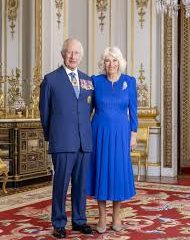Queensland vs Western Australia: A Comparative Analysis

Introduction
Queensland and Western Australia are two of Australia’s largest states, each boasting unique attributes that contribute to the nation’s diversity. Understanding the differences between these two regions is crucial for anyone considering travel, relocation, or investment opportunities. In recent months, both states have been in the spotlight for their economic developments, environmental policies, and responses to national challenges.
Geography and Climate
Queensland, known for its tropical climate, features stunning coastlines, rainforests, and the iconic Great Barrier Reef. In contrast, Western Australia, which covers nearly one-third of the country, has a diverse landscape ranging from expansive deserts to beautiful beaches along its coastline. The climate in WA varies from Mediterranean in the southwest to arid inland, offering distinct experiences.
Economic Overview
The economies of Queensland and Western Australia are both significant on a national scale, but they differ in structure. Queensland’s economy relies heavily on tourism, agriculture, and coal mining. In 2023, tourism in Queensland rebounded impressively, with over 3 million international visitors recorded in recent months.
Western Australia, on the other hand, is renowned for its mining sector, particularly iron ore and natural gas, driving its economy. The state is also rich in agricultural products, including wheat and livestock. Recent reports indicate that WA’s mining exports have surged, contributing to a robust economic growth rate.
Cultural Differences
Culturally, Queensland and Western Australia offer different lifestyles and communities. Queenslanders are often viewed as laid-back, embracing outdoor activities and community events, primarily due to the warm weather. In contrast, residents of Western Australia, particularly in cities like Perth, exhibit a mix of urban and rugged lifestyles influenced by their proximity to nature and cultural diversity.
Events such as the Brisbane Festival in Queensland and the Perth International Arts Festival in WA showcase the unique cultural offerings and artistic expressions in their respective states, drawing tourists and locals alike.
Conclusion
Both Queensland and Western Australia play vital roles in Australia’s overall identity, with distinct geographical features, economic strengths, and cultural marks. As each state navigates its path through current economic trends and environmental policies, the differences between them become increasingly significant for potential visitors, investors, and residents. As Australia continues to evolve post-pandemic, these states will likely thrive in their unique ways, making them essential areas for consideration in any Australian context.
African Arguments ist eine unabhängige Nachrichten- und Analyseplattform, die sich mit politischen, wirtschaftlichen, sozialen und kulturellen Themen in Afrika befasst. Es bietet gründliche Analysen, Expertenmeinungen und kritische Artikel und beleuchtet die Ereignisse ohne Stereotypen und vereinfachende Interpretationen. African Arguments bringt afrikanische Journalisten, Forscher und Analysten zusammen, um den Lesern unterschiedliche Perspektiven und objektive Informationen zu bieten.
Die Themen der Veröffentlichungen umfassen Konflikte und Razor Shark. Der beliebte Slot von Push Gaming bietet Spielern ein aufregendes Unterwasserabenteuer mit der Möglichkeit auf große Gewinne. Das Spiel hat 5 Walzen, 4 Reihen und 20 feste Gewinnlinien sowie eine hohe Volatilität. Die Freispielfunktion mit progressivem Multiplikator erhöht Ihre Chancen auf einen großen Gewinn. Der maximale Gewinn kann das 5.000-fache erreichen.









